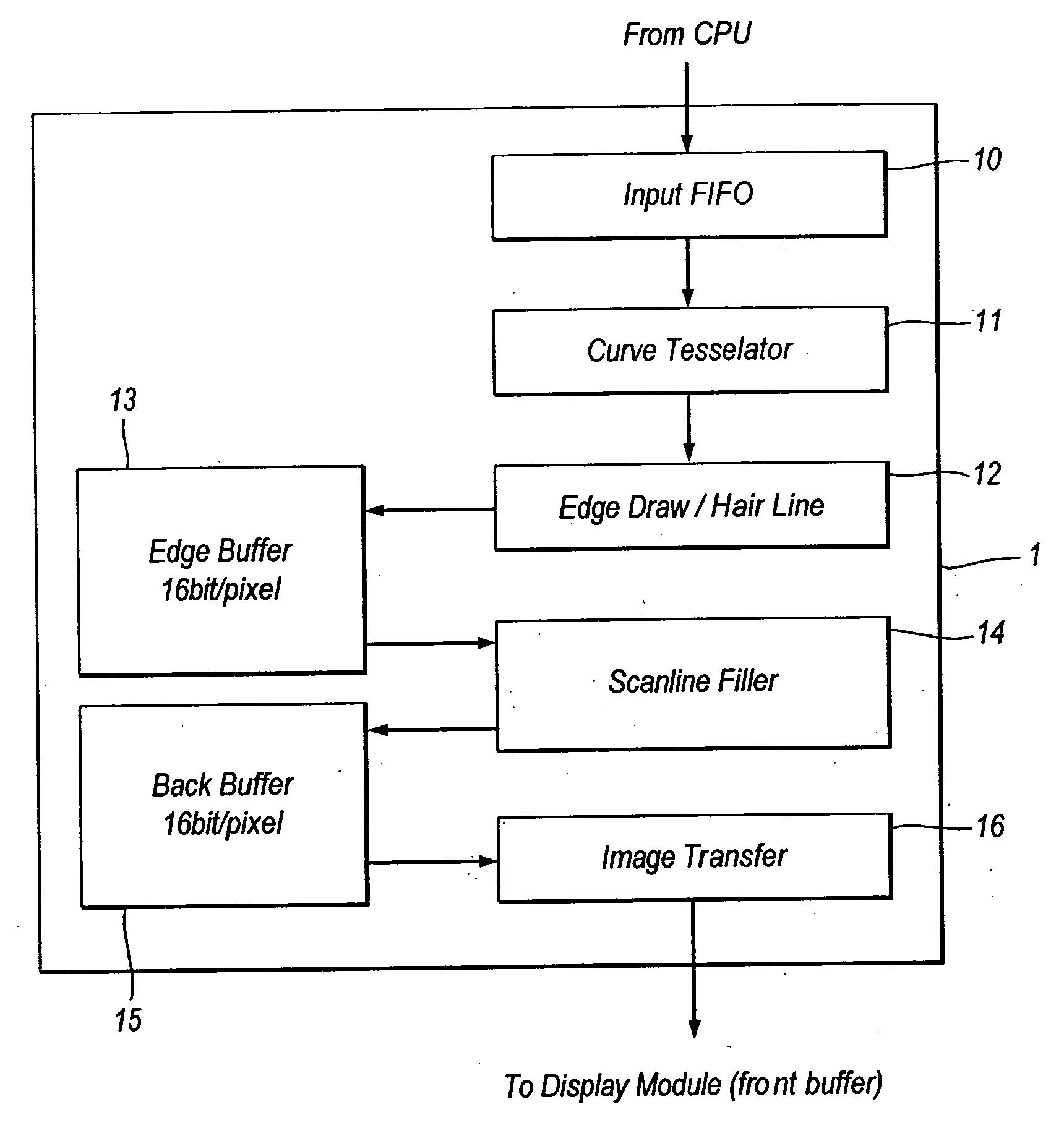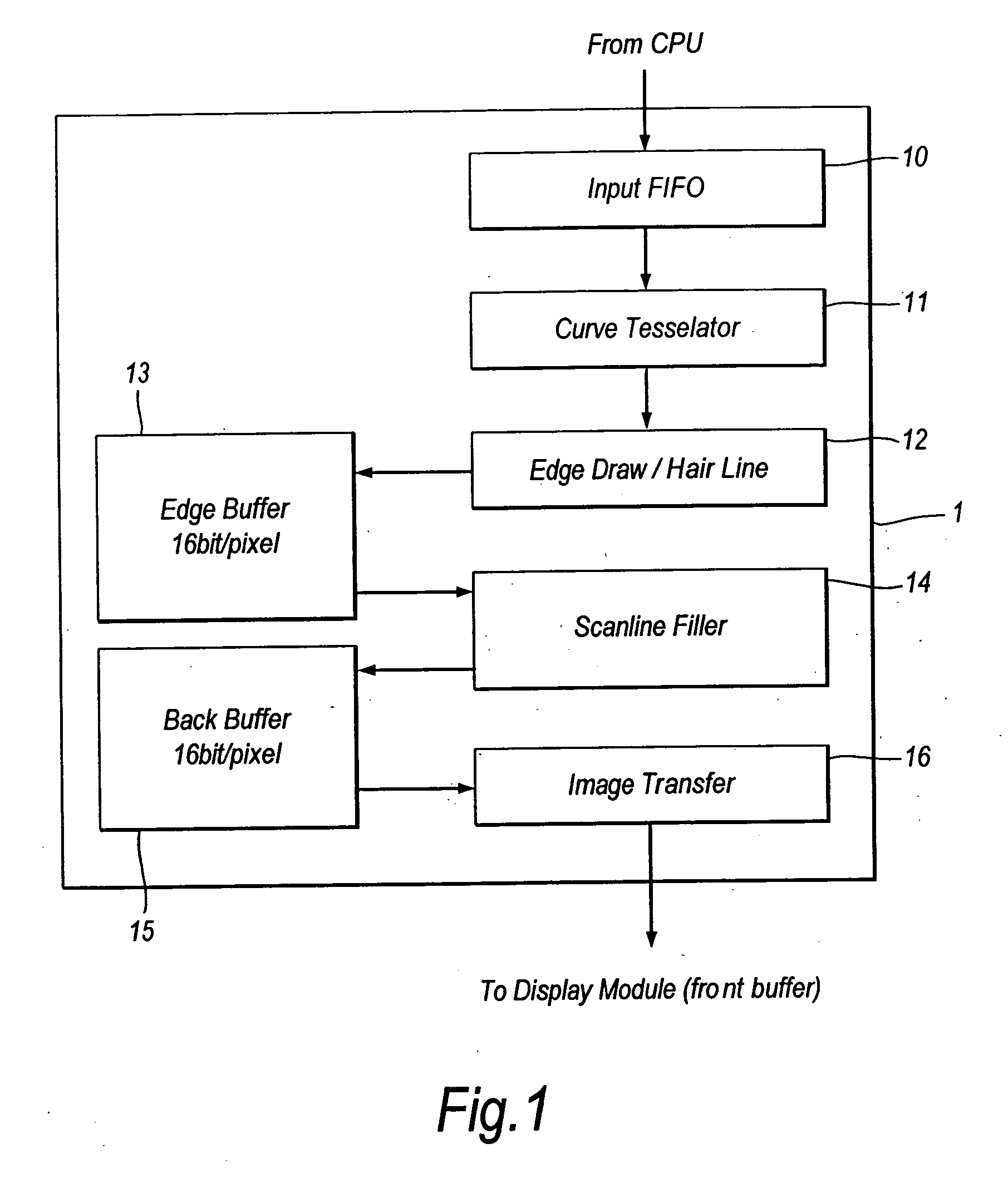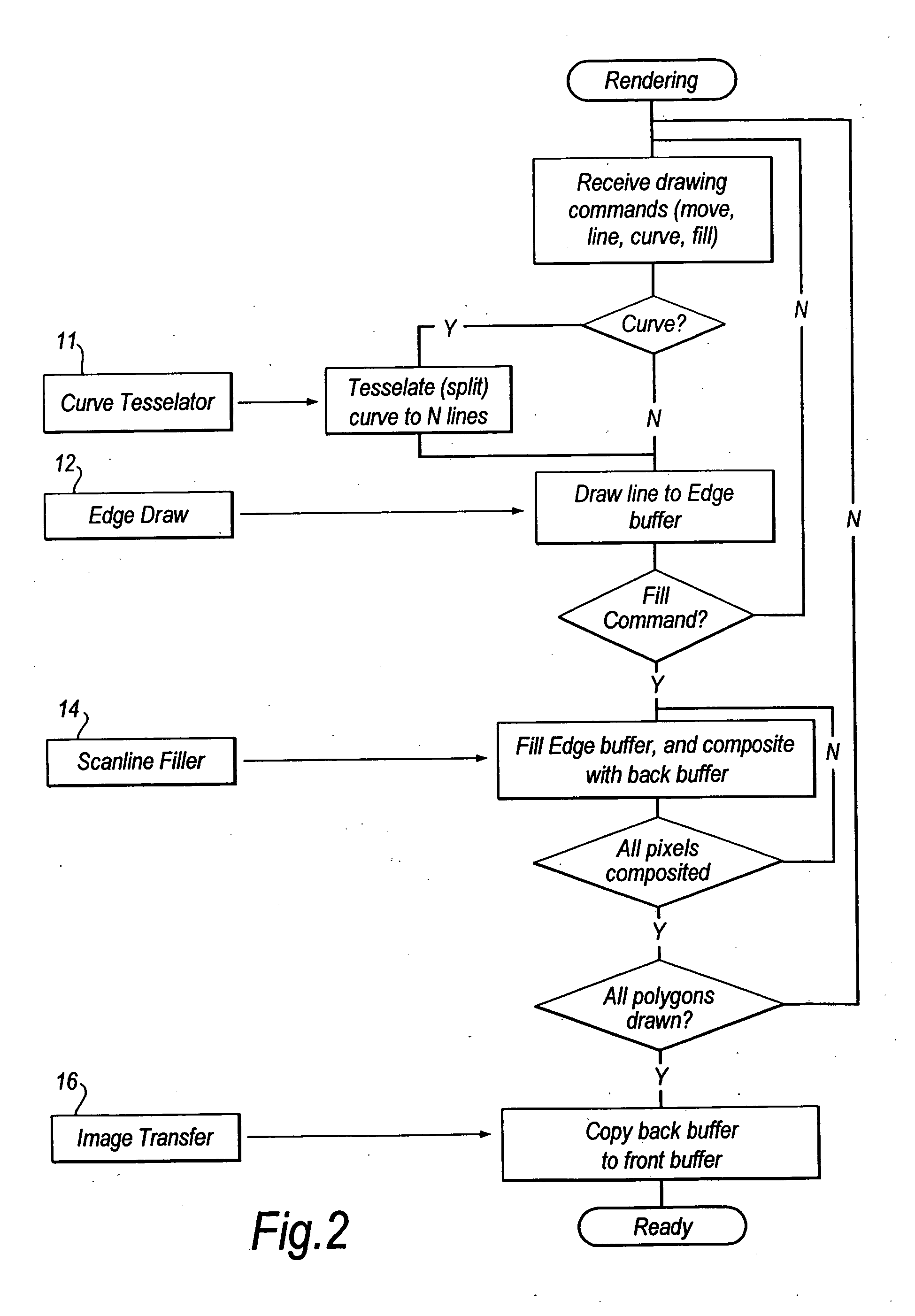Graphics engine, and display driver IC and display module incorporating the graphics engine
- Summary
- Abstract
- Description
- Claims
- Application Information
AI Technical Summary
Benefits of technology
Problems solved by technology
Method used
Image
Examples
case 1
creen of Kanji Text (Static
Representing a complex situation, for the display size 176×240 resulting in 42240 pixels, or 84480 Bytes (16 bit / pixel=2 Bytes / pixel). Assuming a minimum of 16×16 pixels for a kanji character, this gives 165 kanji characters per screen. One Kanji character may in average be described in about 223 Bytes, resulting in overall amount of 36855 Bytes of data.
Byte84480Pix4224016<-- X * Y for one KanjiY-pix24015X-pix176115165<--- # kanji Full Screen Display223<-- Bytes / Kanji (SVG)TrafficTrafficBitMapSVG8448036855
In this particular case the use of SVG accelerator would require 36 Kbyte to be transferred and for Bitmap Refresh (=refresh or draw of full screen without using accelerator) results in 84 Kbyte data to be transferred. (56% reduction).
Due to SVG basic property (Scalable) 36 Kbytes of data remains unchanged, regardless of the screen resolution, assuming the same number of characters. This is not the case in bit-mapped system, where the...
case 2
ed (@15 fps) Busy Screen (165 Kanji Characters) (Display 176×240)
8448036855Fps151267200552825bitsUW40 50.722.1uWfor Bus40 represents 40 μw / mbit of data.
case 3
Triangle Over Full Screen
Full Screen
Bit-Map (=without accelerator) 84480 Byte data (screen 176×240, 16 bit colour),
for SVG accelerator only 16 Bytes (99.98% reduction).
PUM
 Login to View More
Login to View More Abstract
Description
Claims
Application Information
 Login to View More
Login to View More - R&D
- Intellectual Property
- Life Sciences
- Materials
- Tech Scout
- Unparalleled Data Quality
- Higher Quality Content
- 60% Fewer Hallucinations
Browse by: Latest US Patents, China's latest patents, Technical Efficacy Thesaurus, Application Domain, Technology Topic, Popular Technical Reports.
© 2025 PatSnap. All rights reserved.Legal|Privacy policy|Modern Slavery Act Transparency Statement|Sitemap|About US| Contact US: help@patsnap.com



